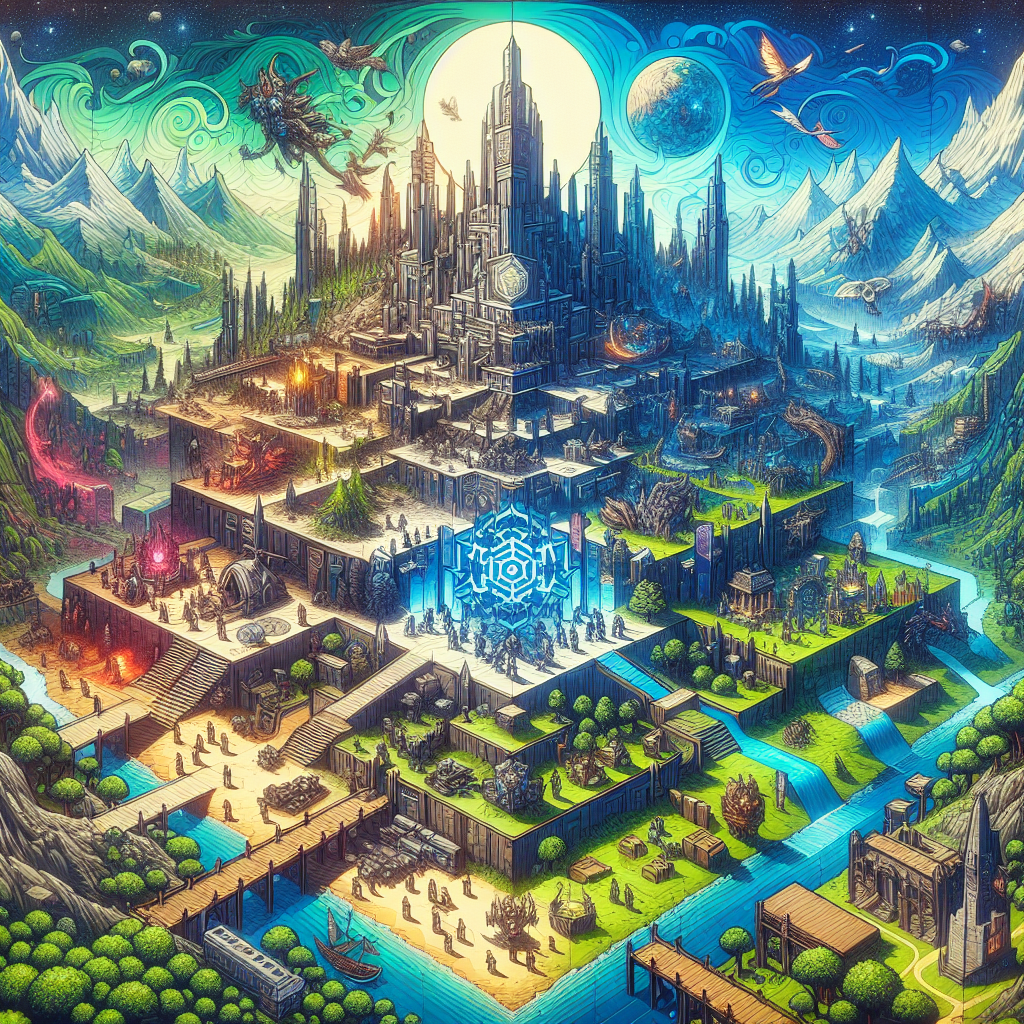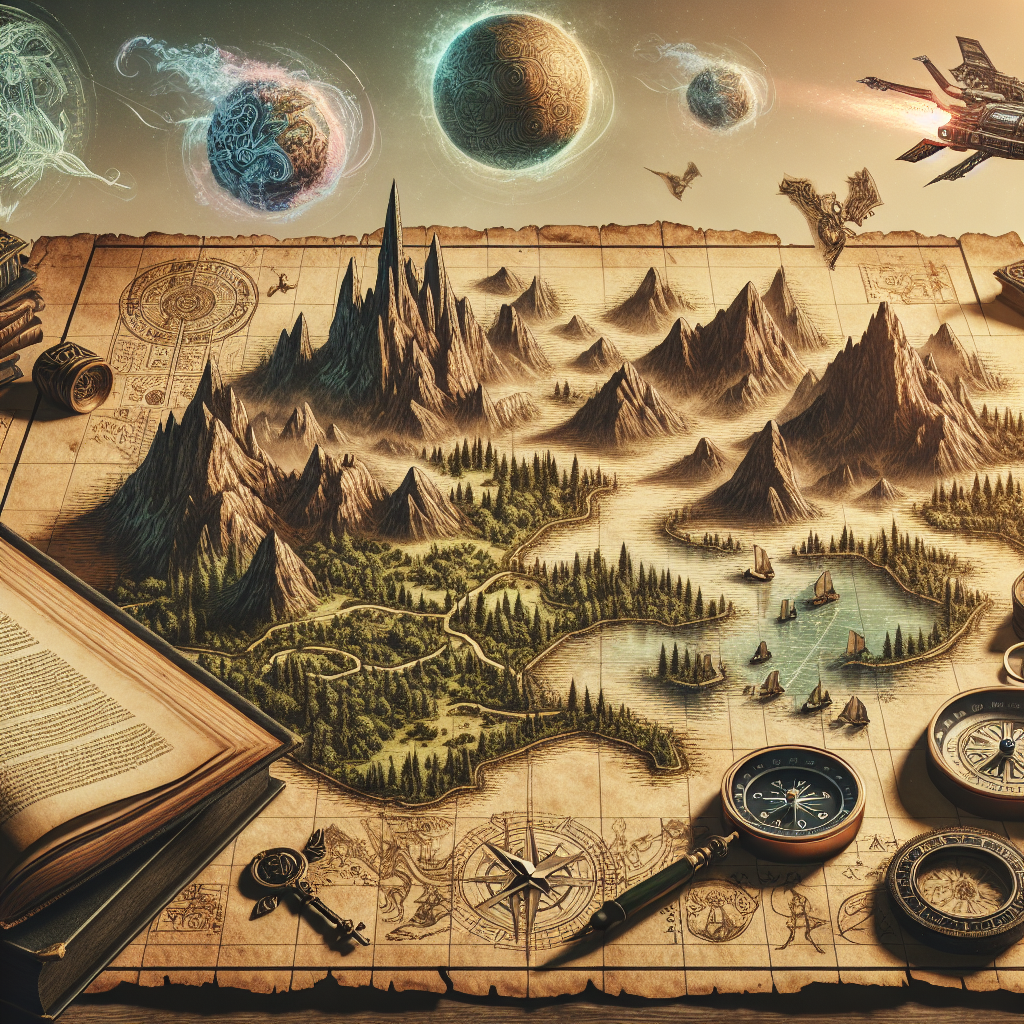Worlds Worth Exploring: Best MMO Maps and Zones
The Art of Making Virtual Worlds Feel Real
Massively Multiplayer Online (MMO) games have long captured the imagination of gamers worldwide, transporting them to fantastical realms brimming with adventure, intrigue, and a sense of boundless possibility. At the heart of these immersive experiences lie the meticulously crafted maps and zones that serve as the canvas for players to explore, conquer, and lose themselves in.
In this comprehensive guide, we'll delve into the art of creating virtual worlds that feel truly alive and captivating, drawing insights from some of the most acclaimed MMO environments in the industry. Whether you're a game developer, a worldbuilder, or simply a passionate fan, you'll discover the key principles and techniques that bring these digital landscapes to life, leaving a lasting impression on players.
The Importance of Worldbuilding in MMOs
In the vast and ever-evolving landscape of MMOs, the quality of the virtual worlds presented to players can make or break the overall experience. Compelling worldbuilding is essential for immersing players, fostering a sense of exploration and discovery, and creating a cohesive, believable environment that resonates with the game's narrative and themes.
Establishing a Distinct Visual Identity
One of the hallmarks of a successful MMO map or zone is its distinct visual identity. By crafting environments that are visually striking and immediately recognizable, developers can create a strong sense of place and atmosphere that draws players in and keeps them engaged.
Consider the towering, angular architecture and muted color palette of Stormwind City in World of Warcraft, which evokes a sense of ancient power and a proud, stoic culture. Or the lush, verdant forests and cascading waterfalls of Teldrassil, which convey a tranquil, mystical ambiance. These visual cues not only establish the game's overarching aesthetic but also subtly communicate the cultural and historical nuances of the world.
Fostering a Sense of Scale and Exploration
Expansive, meticulously detailed maps and zones are a hallmark of many successful MMOs, as they create a profound sense of scale and encourage players to embark on thrilling journeys of exploration. By designing environments that are vast, diverse, and layered with hidden nooks and crannies, developers can ignite the player's curiosity and foster a genuine desire to uncover the world's secrets.
The Shatterspear Vale in World of Warcraft's Cataclysm expansion, for example, features a sprawling, jungle-like landscape dotted with ancient ruins, treacherous cliffs, and a network of winding paths that beckon players to delve deeper. Similarly, the sprawling, multi-tiered city of Nexus in WildStar imparts a tangible sense of scope and verticality, enticing players to scour every nook and cranny for valuable resources and unexpected discoveries.
Integrating Narrative and Lore
Truly immersive virtual worlds go beyond mere aesthetics, weaving in rich narratives and lore that give context and meaning to the environments players inhabit. By seamlessly integrating storytelling elements into the map and zone design, developers can create a deeper connection between the player and the world, fostering a stronger sense of investment and investment.
The Mournhold region in The Elder Scrolls Online, for example, is steeped in the long and tumultuous history of the Dunmer people, with crumbling ruins, ancient temples, and bustling marketplaces that reflect the cultural and political complexities of the setting. Similarly, the Karazhan tower in World of Warcraft serves as a haunting reminder of the game's dark past, its once-grand halls now overrun by the sinister forces that brought about its downfall.
Crafting Memorable Environments
Beyond the overarching principles of worldbuilding, the true mastery of MMO map and zone design lies in the ability to craft environments that are not only visually stunning but also deeply memorable and impactful for players.
Leveraging Topography and Terrain
The natural topography and terrain of a virtual world can be powerful tools for creating memorable and immersive environments. By carefully sculpting the landscape, developers can guide players through a diverse array of experiences, from treacherous mountain passes and sprawling valleys to bustling coastal towns and serene lakes.
The Shadowmoon Valley in World of Warcraft's Warlords of Draenor expansion, for instance, features a captivating blend of lush, rolling hills, towering rock formations, and tranquil bodies of water, each element working in harmony to create a truly breathtaking and memorable setting. Similarly, the Ascent of the Ancients in Guild Wars 2 challenges players to navigate a perilous, vertically oriented environment, with towering peaks and precarious pathways that heighten the sense of adventure and exploration.
Incorporating Dynamic Elements
Bringing virtual worlds to life goes beyond static environments; the incorporation of dynamic elements can add an extra layer of depth and engagement for players. This can include weather patterns, day-night cycles, evolving environmental effects, and even scripted events that unfold within the game world.
The Stormheim region in World of Warcraft's Legion expansion, for example, features dramatic shifts in weather, with raging storms and crashing waves that amplify the sense of rugged, untamed wilderness. In Final Fantasy XIV, the Coerthas Western Highlands boasts a dynamic snow system, where the accumulation of snow and the frequency of blizzards can dramatically alter the landscape and the player's approach to traversal and exploration.
Fostering Memorable Encounters
In addition to breathtaking visuals and dynamic environmental elements, the most captivating MMO maps and zones are those that offer players unique and memorable encounters. By strategically placing captivating points of interest, challenging obstacles, and unexpected events, developers can create a sense of discovery and excitement that keeps players engaged and invested in the world.
The Karazhan Opera House in World of Warcraft, for example, is a renowned encounter that transforms a grand, theatrical setting into a nerve-wracking, high-stakes battle against a formidable foe. Similarly, the treacherous trek through the Dread Wastes in Mists of Pandaria, with its towering insect hives and swarms of aggressive creatures, creates a palpable sense of tension and dread that lingers long after the player has moved on.
Bringing it All Together: Best-in-Class MMO Maps and Zones
Now that we've explored the key principles and techniques behind crafting captivating virtual worlds, let's take a closer look at some of the best-in-class examples of MMO maps and zones that embody these principles to perfection.
The Blasted Lands in World of Warcraft
The Blasted Lands in World of Warcraft is a prime example of how a well-designed map can transport players to a truly alien and foreboding environment. With its scarred, volcanic landscape, towering demonic structures, and a constant sense of impending danger, the Blasted Lands immediately establishes a distinct visual identity and a palpable atmosphere of dread.
Beyond its striking aesthetics, the Blasted Lands also offers a wealth of narrative hooks and points of interest that encourage exploration. From the imposing Dark Portal, which serves as a gateway to other worlds, to the ruined settlements and encampments that bear witness to the region's tumultuous history, there is a tangible sense of depth and significance to every corner of this captivating zone.
The Maw in World of Warcraft: Shadowlands
The Maw in World of Warcraft's Shadowlands expansion is a prime example of how MMO maps and zones can be leveraged to create a truly unnerving and immersive experience. Surrounded by towering, jagged cliffs and a perpetual, oppressive gloom, the Maw immediately conveys a sense of hopelessness and despair, setting the stage for a harrowing journey through the heart of the Shadowlands.
Beyond its visually striking design, the Maw also incorporates dynamic elements that heighten the sense of danger and urgency. The ever-present threat of the Jailer's forces, the unpredictable weather patterns, and the constant pressure of the zone's deadly mechanics work together to create a relentless, high-stakes environment that challenges players to adapt and overcome.
The Shattered Isles in Guild Wars 2
The Shattered Isles in Guild Wars 2 is a stunning example of how MMO maps and zones can seamlessly integrate narrative and lore elements to create a truly immersive and captivating experience. Characterized by its striking, fractured landscape, the Shattered Isles bears the scars of a cataclysmic event that has reshaped the very fabric of the world.
As players explore this haunting environment, they are confronted with the aftermath of this disaster, encountering the remnants of ancient civilizations, the struggles of displaced communities, and the looming presence of powerful forces that threaten to further destabilize the region. This layered narrative, combined with the zone's visually striking design and the sense of mystery and exploration that permeates every corner, creates a truly unforgettable experience for players.
Key Takeaways
In the world of MMOs, the art of crafting captivating virtual environments is a multifaceted discipline that requires a deep understanding of worldbuilding, visual design, and narrative integration. By leveraging the principles and techniques explored in this article, developers and worldbuilders can create MMO maps and zones that truly transport players, fostering a sense of wonder, exploration, and investment in the game's digital landscapes.
Whether it's the haunting, demonic grandeur of the Blasted Lands, the oppressive, high-stakes atmosphere of the Maw, or the fractured, narrative-driven Shattered Isles, the best MMO environments share a common thread: they are meticulously crafted to create a lasting impression, immersing players in worlds that feel truly alive and worth exploring.
Final Thoughts
As the MMO genre continues to evolve and push the boundaries of what's possible in virtual worlds, the importance of exceptional map and zone design will only continue to grow. By mastering the art of worldbuilding and leveraging the latest tools and technologies, developers can create truly captivating environments that captivate players and leave a lasting impact on the industry.
Whether you're a game developer, a worldbuilder, or simply a passionate fan, the insights and examples presented in this article can serve as a valuable resource for understanding the key principles and techniques that bring virtual worlds to life. By embracing the power of visual identity, scale, narrative integration, and dynamic elements, you too can create MMO environments that inspire wonder, ignite the imagination, and leave an indelible mark on the players who explore them.





